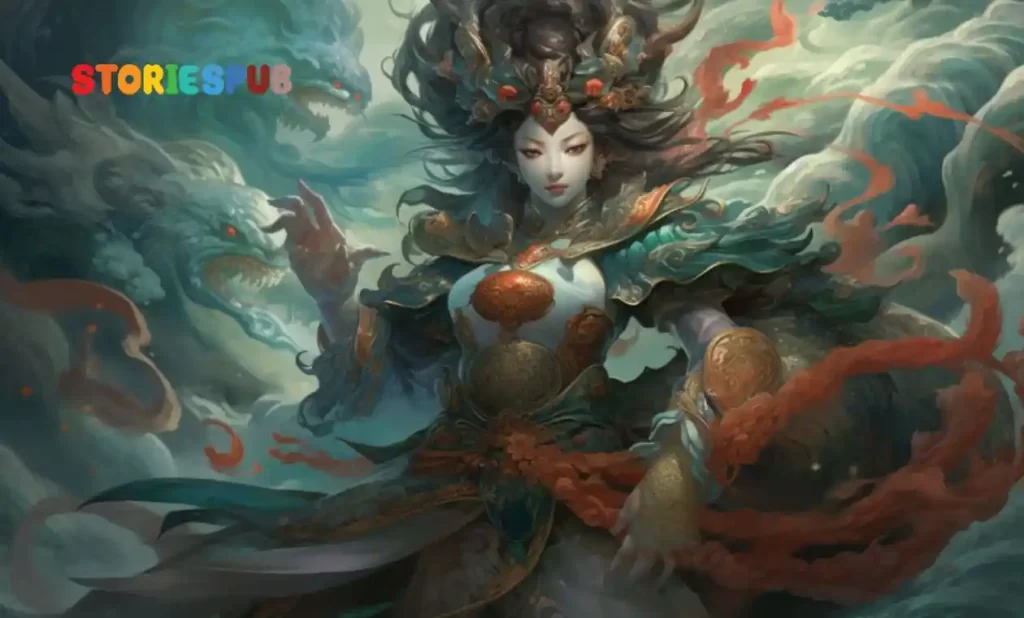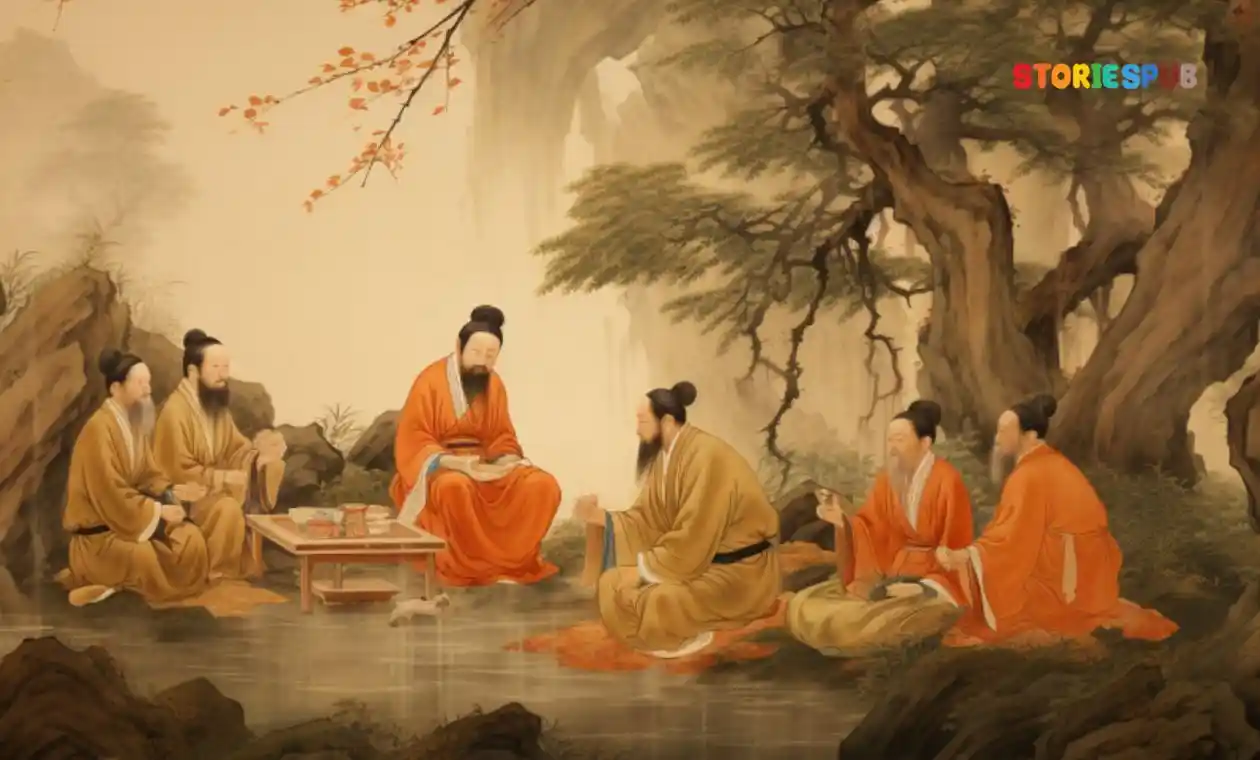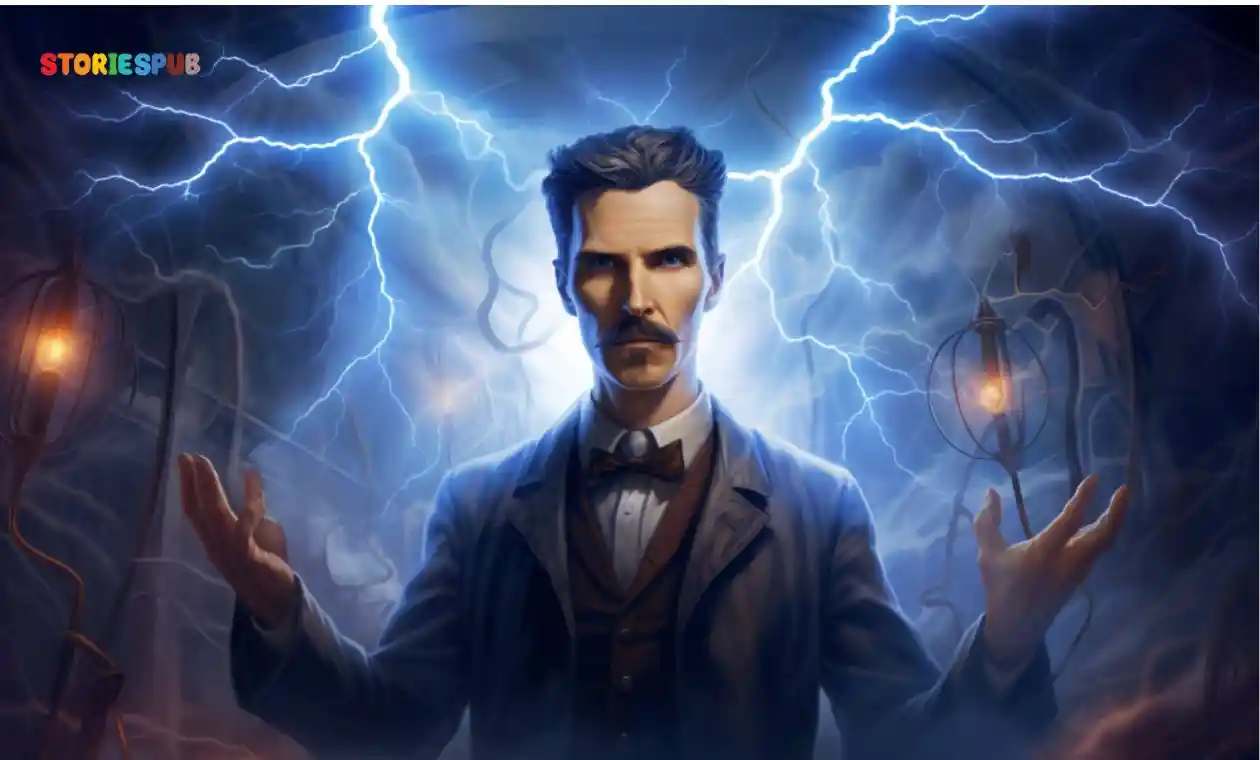Zhu Rong: The God of Fire, Volcanoes and Flames

Chinese mythology is filled with a pantheon of gods and goddesses, each with their own unique attributes and stories. One such deity is Zhu Rong, the god of fire who is associated with volcanoes and flames.
In Chinese mythology, he is known for his great power and fierce battles with other deities. Zhu Rong has been worshipped by the Chinese people for thousands of years.
He was considered to be one of the most important gods in ancient China, representing both creation and destruction. In this article, we will delve into the complete story of Zhu Rong, exploring his mythological origins, role in Chinese mythology, historical significance, lesser-known facts about him.
Mythological Origins: How Zhu Rong Came to Be
Born from Sapphire Stone
According to Chinese mythology, Zhu Rong was born from a sapphire stone within the earth. As he emerged from the stone as a fully formed adult god ready to wield his fiery powers.
Familial Relations
Zhu Rong’s family background includes several other powerful deities. His father was Di Jun or Emperor Jun , one of ten celestial emperors who ruled over different aspects of nature. His mother was also a celestial being named Xuan Yuan who had control over weather phenomena such as wind!
Zhu Rong in Chinese Mythology: Flames as his Element
God Of Fire & Volcanoes
Zhu Rong is considered to be the god of fire, volcanoes, and flames in Chinese mythology. He is often depicted with a powerful flame in his hand, representing his control over this element. His association with volcanoes and flames has made him a symbol of destruction but also renewal and rebirth.
Battles with Other Deities
Zhu Rong was known for his fierce battles with other deities. One such battle was against Gong Gong, the god of water. Zhu Rong defeated Gong Gong in this battle, establishing himself as one of the most powerful gods in Chinese mythology.
Another notable battle was between Zhu Rong and Chi You, a war deity who led an army of demons. In this battle, Zhu Rong emerged victorious once again, solidifying his position as one of the most feared and revered gods in ancient China.
Protector of Humanity
Zhu Rong is also known for his role as a protector of humanity. He was believed to have saved the people during times of calamity by using his fiery powers to destroy evil creatures or natural disasters such as floods or earthquakes.
Historical Significance: The Worship and Reverence for Zhu Rong
Influence on Art & Literature
Zhu Rong has been worshipped throughout Chinese history for thousands of years. His influence can be seen not only in religion but also art, literature and culture throughout China.
Lesser-Known Facts about Zhu Rong: Appearance & Animal Companions
The Differences in Artistic Depictions
Zhu Rong’s appearance can vary depending on artistic depictions. Some portray him as a humanoid figure with fiery hair and a fierce expression, while others depict him as a dragon or serpent-like creature with multiple heads.
The Significance of his Animal Companions
Zhu Rong is often depicted alongside two animal companions: the tiger and the serpent. The tiger represents power and strength, while the serpent symbolizes wisdom and cunning. Together, they represent Zhu Rong’s control over creation and destruction.
Conclusion: Zhu Rong’s Importance in Chinese Mythology and Culture
Zhu Rong is an important god in Chinese mythology who has been worshipped for thousands of years.
His association with fire, volcanoes, and flames has made him a symbol of both destruction and renewal. His battles with other deities have solidified his position as one of the most powerful gods in ancient China.
Mythological Origins
Zhu Rong’s Birth and Family Background
According to Chinese mythology, Zhu Rong was born to the god of water and goddess of fire. His father was known as Gong Gong, while his mother was named Xihuang. Zhu Rong had a twin brother named Yinglong, who was associated with rain and clouds.
The two brothers were said to have been born on the same day, but from different mothers. As the god of fire, Zhu Rong was believed to have inherited his mother’s powers.
He was said to have been born with a flaming aura that surrounded him at all times. The flames were so intense that they could only be extinguished by water.
His Role in the Creation Myth of Chinese Mythology
In Chinese mythology, it is believed that the universe began as an egg-shaped entity known as the chaos or huang. Inside this chaos were two opposing forces – yin and yang – which eventually led to the creation of the world. Zhu Rong is said to have played a crucial role in this creation myth.
According to legend, he helped separate yin from yang by using his powers over fire. He ignited a flame that burned brightly enough to create light and separate these opposing forces into distinct entities.
Zhu Rong’s role in creating order out of chaos made him an important figure in Chinese mythology. His ability to control fire made him both revered and feared by mortals and other deities alike.
Despite being associated with destruction through his control of fire, Zhu Rong also represented renewal and regeneration through its transformative power. He symbolized change within the universe which has maintained his importance throughout Chinese history
Zhu Rong in Chinese Mythology
His Association with Fire, Volcanoes, and Flames
Zhu Rong is best known as the god of fire in Chinese mythology. He is often depicted as a fierce warrior, riding on the back of a tiger or serpent, with flames emanating from his body.
His association with fire is linked to his role as a protector of humanity, as well as his status as a symbol of power and strength. In addition to being associated with fire, Zhu Rong is also linked to volcanoes and flames.
He is said to have created the first volcano by igniting a mountain during one of his battles. It was believed that he could control the elements of fire and magma at will, making him an important deity in ancient times.
Stories of His Battles with Other Deities, Including Gong Gong and Chi You
Zhu Rong was often involved in battles with other deities in Chinese mythology. One such battle was against Gong Gong – the god of water – who caused massive floods that threatened humanity’s existence.
Zhu Rong fought against Gong Gong using his flames and ultimately defeated him. Another famous story involves Zhu Rong battling Chi You – a powerful war deity who had several animal heads on his body.
The two gods engaged in an epic battle that lasted for days. In the end, Zhu Rong emerged victorious thanks to his mastery over fire.
His Role as a Protector of Humanity
Despite being known for his prowess in battle, Zhu Rong was also revered for his role as a protector of humanity. It was believed that he had the power to protect people from harm and bring prosperity to those who worshipped him.
In times of crisis such as earthquakes or volcanic eruptions, people would pray to Zhu Rong for protection and guidance. They would light fires and offer sacrifices to him, in hopes that he would show mercy and spare them from harm.
A Beloved Deity Across Chinese Mythology
Zhu Rong is an important deity in Chinese mythology and is revered across many different regions of China. He is often depicted in art, literature, and film as a powerful figure who embodies strength, courage, and honor.
Even today, many people continue to worship Zhu Rong as a symbol of protection and good luck. His legacy lives on through traditional festivals such as the Fire God Festival which honors his power over flames.
Conclusion
In Chinese mythology, Zhu Rong remains one of the most important gods associated with fire. His battles with other deities such as Gong Gong and Chi You make him a prominent figure in Chinese folklore.
However, it was his role as a protector of humanity that endeared him to the hearts of the people. Whether worshipped for his power or his benevolence, Zhu Rong continues to be an iconic figure in Chinese culture – one whose influence will not be forgotten any time soon.
The Historical Significance of Zhu Rong
Zhu Rong has played an essential role in Chinese mythology and culture, which is evident from the worship and reverence of this god throughout Chinese history. The name “Zhu Rong” can be found in various historical texts and inscriptions, indicating the importance of this deity to the people of ancient China.
It is believed that Zhu Rong was worshipped during the Shang Dynasty (1600-1046 BCE) as a god associated with fire, war, and agriculture. One of the most significant influences Zhu Rong had on Chinese culture was through his connection to fire.
Fire was an essential element in early Chinese society for cooking, warmth, and light. Thus Zhu Rong’s association with fire made him a crucial deity to many communities.
He was also revered for his ability to control natural disasters such as volcanic eruptions that threatened human life. Moreover, Zhu Rong’s influence extends beyond religion into other areas such as art and literature.
Since he was often depicted in art holding flames or standing in front of volcanoes or other fiery objects, artists used his image to create beautiful pieces that reflected their devotion to him. Similarly, writers incorporated him into stories about battles between gods or as a protector of humanity.
In addition to these literary connections, Zhu Rong has been mentioned in various historical texts over time. One example is “The Annals of Wu,” which recorded events during the Eastern Han Dynasty (25-220 CE).
In it, there are references to sacrifices made by leaders who worshipped Zhu Rong. While Zhu Rong’s worship became less common over time due to changes in China’s religious landscape through Confucianism and Taoism among others; during periods like Song Dynasty (960-1279 CE), when there were efforts to revive traditional beliefs he still received worship from some communities.
His Influence on Chinese Literature
Zhu Rong’s influence on Chinese literature is immense, with his stories being passed down from generation to generation. In Chinese mythology, he is often depicted as a hero who fights against evil forces threatening humanity.
The story of his battle against Gong Gong, the water god who caused a severe flood, is one example of this popular narrative. One of the most famous stories about Zhu Rong can be found in “Huainanzi,” which is a collection of philosophical essays from the Western Han Dynasty (206 BCE-9 CE).
The story tells of Zhu Rong’s defeat of Chi You, a powerful sorcerer and warrior. This story became so popular that it was later incorporated into novels such as “Fengshen Yanyi,” which tells the stories of many gods and their battles with demons.
Zhu Rong has also been referenced in other literary works throughout history. For example, he appears in “Journey to the West,” one of China’s most famous novels that tells the story of a monk traveling to India to retrieve Buddhist scriptures.
In this novel, he helps the main character fight against monsters and demons. Zhu Rong has even influenced modern literature with references to him appearing in contemporary works such as Jin Yong’s martial arts novels and science fiction books.
His Influence on Chinese Art
Zhu Rong has had an enormous influence on Chinese art throughout history. His association with fire and volcanoes made him an ideal subject for artists looking to create dramatic pieces. He was frequently depicted holding flames or standing in front of volcanoes while wearing traditional robes or armor.
One example can be seen on bronze vessels from the Shang dynasty; these were cast using sophisticated technology at high temperatures and depict Zhu Rong as one responsible for creating harmony between humans through sacrifices offered up by kings. Other artwork depicting him includes paintings, sculpture-like relief carvings, and even furniture.
His image has also been incorporated into architectural elements on temples and palace palaces, where the deity’s presence was believed to provide protection against natural disasters. For example, the Temple of Heaven in Beijing depicts Zhu Rong as part of a larger structure dedicated to various gods.
In addition to these traditional forms of art, Zhu Rong’s influence can be seen in modern-day Chinese art as well. Contemporary artists draw inspiration from his legend when creating works that reflect their cultural heritage and identity.
Conclusion
Zhu Rong’s worship has been an integral part of Chinese culture since ancient times. He has influenced literature, art, religion and played an essential role in ancient Chinese society, where fire was a crucial element for many daily activities. Despite changes over time due to other cultural influences affecting Chinese belief systems like Confucianism or Taoism; Zhu Rong remains an icon within China today whose stories are still passed down from generation to generation.
Lesser-known Facts about Zhu Rong
Zhu Rong is a complex figure in Chinese mythology, with many interpretations and lesser-known facts that are not often discussed. One of the most interesting aspects of Zhu Rong’s character is his appearance, which has varied throughout history.
Some depictions show him as a fierce warrior with a red face and wild hair, while others show him as a more benevolent figure with a calm expression. Another lesser-known fact about Zhu Rong is his association with animals, specifically the tiger and the serpent.
In some stories, he is depicted riding on the back of a tiger or wielding a serpent as his weapon. These animals are both significant symbols in Chinese mythology, representing strength and wisdom respectively.
While Zhu Rong is primarily known for his association with fire and volcanoes, there are many lesser-known stories about him that showcase his other abilities and interests. For example, he was said to have created music and dance, which were used in religious ceremonies to honor the gods.
In addition to being a powerful deity, Zhu Rong was also revered as an ancestor by some groups in ancient China. This belief was based on legends that claimed he had fathered many children who went on to become important cultural figures.
Despite being worshiped by many people throughout history, there are still many mysteries surrounding Zhu Rong’s true nature and intentions. Some scholars believe that he may have been based on real historical figures or events, while others think that he represents abstract concepts like passion or creativity.
The different interpretations of his appearance
As mentioned earlier, one of the most intriguing aspects of Zhu Rong’s character is how his appearance has been depicted over time. While most depictions show him as a powerful deity associated with fire and volcanoes, there are variations in how artists have interpreted his physical features. Some representations show him wearing armor and wielding weapons, emphasizing his warrior-like qualities.
Others show him with softer features and a more benevolent expression, highlighting his role as a protector of humanity. Some depictions even combine these two interpretations, showing him as a fierce warrior who is also compassionate and wise.
The differences in Zhu Rong’s appearance are often influenced by the time period or cultural context in which they were created. For example, during the Han dynasty (202 BCE-220 CE), he was often depicted with a red face and wild hair, which may have been intended to convey his association with fire.
In later periods, however, Zhu Rong’s appearance became more varied and complex. Some artists portrayed him as a god who presided over music and dance, while others emphasized his wisdom and intellect.
The significance of his animal companions – the tiger and the serpent
In addition to his association with fire and volcanoes, Zhu Rong is also closely associated with two animals – the tiger and the serpent. These animals are significant symbols in Chinese mythology, representing strength and wisdom respectively.
The tiger is often seen as a powerful predator that embodies courage and bravery. In some stories about Zhu Rong, he is depicted riding on the back of a tiger or using its strength to overcome enemies.
The serpent is another important symbol in Chinese mythology, representing wisdom and cunning. In some depictions of Zhu Rong, he wields a serpent as his weapon or is shown surrounded by serpents that represent his ability to overcome obstacles through cleverness.
Together, these two animals represent some of the key qualities that are associated with Zhu Rong – strength combined with intelligence. They also help to emphasize his role as both a protector of humanity (represented by the tiger) and an agent of change (represented by the serpent).
The lesser-known stories about him that are not often told
While most people are familiar with Zhu Rong’s association with fire and volcanoes, there are many lesser-known stories about him that highlight his other abilities and interests. For example, in some stories he is said to have created music and dance, which were used in religious ceremonies to honor the gods.
He is also credited with inventing a type of metalworking technique that allowed for the creation of intricate objects like jewelry and weapons. In addition to these more creative pursuits, Zhu Rong was also known for his ability to heal wounds and cure diseases.
He was said to possess a deep knowledge of herbal remedies and natural medicines that allowed him to help those in need. Despite his many talents, however, there are still many mysteries surrounding Zhu Rong’s true nature and motivations.
Some scholars believe that he may have been based on real historical figures or events, while others see him as a symbol for abstract concepts like creativity or passion. Regardless of how he is interpreted, however, Zhu Rong remains an important figure in Chinese mythology who continues to inspire awe and reverence today.
Conclusion
Unforgettable God of Fire
Zhu Rong, the god of fire, has made an unforgettable impact on Chinese mythology and culture. His association with volcanoes, flames, and the protection of humanity has endured for centuries.
His influence can be seen throughout Chinese history in art, literature, and religion. Despite his fiery origins and fierce battles with other deities, Zhu Rong remains a beloved figure in Chinese mythology.
The Importance of Mythology
Mythology plays an important role in shaping a society’s culture and values. The stories of Zhu Rong and other mythological figures have helped to teach important lessons about bravery, loyalty, and the importance of protecting humanity from harm. These stories have been passed down from generation to generation as a way to preserve cultural identity.
Lessons for Today
The tales of Zhu Rong still resonate today as we face modern-day challenges such as climate change and natural disasters. As we look to protect our planet and its inhabitants from harm, we can draw inspiration from his courage in battling against destructive forces. The lessons taught by these ancient myths continue to be relevant today.
A Timeless Figure
Zhu Rong’s significance goes far beyond just being the god of fire. He represents strength in the face of adversity, protection against danger, and a willingness to fight for what is right. His timeless qualities have ensured that he remains an enduring figure in Chinese mythology.
An Enduring Legacy
As we reflect on the complete story of Zhu Rong – known as the god of fire – it becomes clear that his legacy will continue for generations to come. From his mythological origins through his battles with other deities and his historical significance in Chinese culture – he remains an unforgettable figure who continues to inspire us today.
Hey kids, how much did you like Zhu Rong: The God of Fire, Volcanoes and Flames? Please share your view in the comment box. Also, please share this story with your friends on social media so they can also enjoy it, and for more such Chinese Mythology, please bookmark storiespub.com.
Related Post :


















